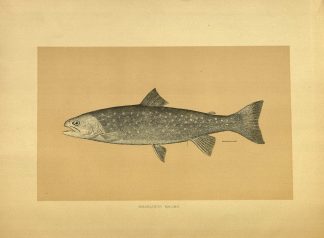By Emily Beck
As Minnesotans, we are experts at weathering winter weather, though we are not the first to marvel about the cold and ice. Here are some excerpts from the Wangensteen Historical Library’s collection that illustrate early thoughts about thermometers, the polar bear plunge, and frozen fish.
Thermometers
When you decide whether or not to wear a hat when you go outside, which kind of thermometer do you check? An online one? One outside?
If you were Dr. George Martine, you’d consult one of a staggering fifteen types of thermometers!
The Wangensteen Historical Library has Martine’s 1792 book Essays on the construction and graduation of thermometers, and on the heating and cooling of bodies that has a chapter dedicated to the history of thermometers, and a big fold-out graph showing the different measurements among different people who theorized about measuring temperature (such as Sir Isaac Newton and physician Stephen Hales) and different places (such as Florence, Paris, and Edinburgh, Scotland).
Whatever thermometer you’re using this winter break, hope you’re keeping warm!
Polar Bear Plunge
During a trip to Alaska, the crew of the Revenue-Steamer Corwin noticed that their perception of the cold changed the longer they were cruising in Arctic waters.
Since they didn’t feel cold even though the temperatures were in the 40s, some crew members took a swim:
“Taking advantage of one of these physiologically warm days, I took a plunge into the icy Arctic water…[and did not] have the ague (a cold) after it; on the contrary, [the swim was] of no great discomfort.”
Have you ever gone for a polar bear plunge? Would you?
Frozen Fish?
In her 1666 book Observations upon experimental philosophy: to which is added, The description of a new blazing world, Margaret Cavendish, Duchess of Newcastle, pondered how fish survived in frozen lakes… Did lakes freeze solid, freezing the fish along with the water?
If so, how did the fish awaken in the spring to swim again? Or was it simply that human eyes could not perceive that the lake was not completely frozen and that the fish continued to swim below the ice?
She was more convinced that fish lived in the water under the ice, but nevertheless stated that “it is more probable for fish to live in Ice, than for other Creatures, because the Principle of Ice is Water, which is the matter of the Fishes respiration, which keeps them alive.”
Ice fishers in Minnesota know that those fish just keep swimming!







